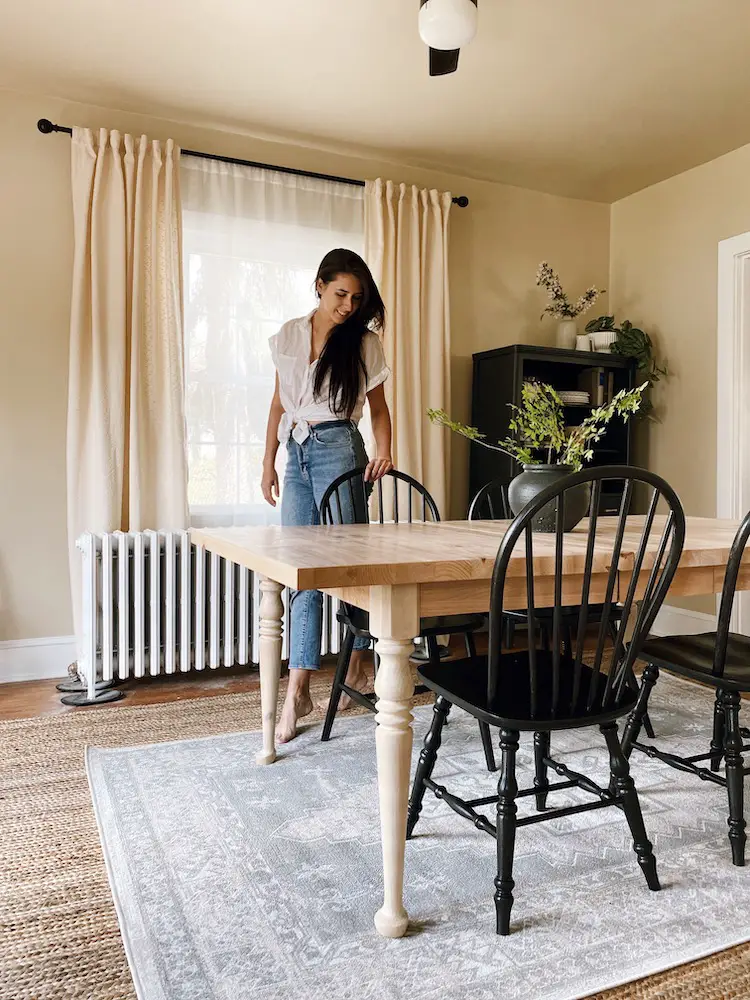Dining Room Table Legs: What to Consider Before You Buy
Dining Room Table Legs: What to Consider Before You Buy
Blog Article
A Detailed Take A Look At Table Leg Styles: Discovering the Suitable Match
Selecting the ideal dining table leg style is crucial for both visual charm and useful functionality. Traditional four legs provide timeless style and security, while the pedestal base offers raised legroom and a modern-day look. For those with bigger tables, trestle legs make sure durable support, whereas barrette legs introduce a mid-century modern-day vibe with their minimal style. The x-shaped legs blend modern design with improved security. Each of these choices brings unique advantages, making the choice greater than simply a matter of preference. Discover additionally to find which style completely complements your eating space and way of life.
Standard 4 Legs
Among the different types of dining table leg styles, the traditional four-leg design continues to be a classic selection for several houses. 4 legs supply balanced support, ensuring the table continues to be secure and qualified of bearing substantial weight (dining room table legs).
From an aesthetic viewpoint, the standard four-leg design can be conveniently adjusted to different interior designs. Whether crafted from timber, metal, or a combination of materials, these legs can be delicately sculpted, smooth and minimalistic, or anything in between. Their convenience permits them to match both rustic and contemporary setups flawlessly.
Additionally, the straightforward framework of the four-leg style facilitates convenience of activity and positioning within an area. Unlike more complex bases, this design lessens obstructions, giving sufficient legroom for diners. In recap, the traditional four-leg eating table leg design marries sustaining beauty with sensible performance, making it a sharp option for those seeking both kind and function in their eating furniture.
Stand Base
Frequently commemorated for its sophisticated and space-efficient design, the pedestal base is a notable option to the typical four-leg setup in eating table leg styles. This unique base typically includes a solitary central column sustaining the tabletop, which can differ in type, from ornately sculpted timber to sleek, modern-day steel. Among the main benefits of the stand base is its ability to maximize legroom and seating versatility. Without edge legs, diners are paid for greater liberty of movement, making it a suitable selection for round and oval tables that advertise more intimate and inclusive celebrations.
Moreover, the pedestal base's main support can take care of significant weight, permitting for the use of heavier tabletops, such as marble or thick hardwood. This strength paired with its visual versatility makes the pedestal base a prominent choice in both standard and contemporary indoor setups. It can effortlessly incorporate with different style themes, from classic beauty to minimalist modernity. The central column itself offers a canvas for intricate layouts and creative expressions, adding an element of aesthetic passion underneath the table. In summary, the pedestal base incorporates capability snappy, making it a refined and practical option for varied dining environments.
Trestle Legs
Trestle legs give a robust and classic foundation for dining tables, defined by their straight cross-bracing and tough assistance beams. Stemming from medieval times, this style has advanced yet preserved its essential framework, making it a perennial fave in both traditional and modern settings. The central trestle beam, commonly supported by two or even more vertical articles, uses extraordinary stability, permitting bigger table lengths without the requirement for added legs.
A substantial advantage of trestle leg tables is the ample legroom they provide. Unlike tables with 4 edge legs, the lack of blockages at the table's edges gives unimpeded area for chairs and restaurants, enhancing comfort and access. This makes trestle tables ideal for fitting bigger gatherings, whether in a dining-room or a reception hall.
From rustic farmhouse to streamlined contemporary styles, trestle legs can be tailored to match specific preferences. Their long-lasting allure and useful advantages make trestle legs an engaging choice for those looking for both design and usefulness in their eating table.
Hairpin Legs

The charm of barrette legs hinges on their simplicity and adaptability - dining room table legs. Available in a variety of products, including steel and brass, they can be completed in countless colors to match various indoor styles. Whether matched with a rustic wooden tabletop or a modern glass surface area, barrette legs effortlessly blend performance with a touch of vintage appeal
Longevity is another noteworthy function of barrette legs. Regardless of their fragile appearance, these legs are crafted to bear substantial weight, making sure visit the website the eating table continues to be stable and secure. Furthermore, they are fairly simple to set up, making them a preferred selection for do it yourself fanatics and specialist furnishings manufacturers alike.
X-Shaped Legs

Constructed from products such as steel, timber, or a combination of both, X-shaped legs can be tailored to match different style choices. Steel legs frequently offer a streamlined and industrial feel, ideal for loft-style houses and contemporary eating rooms.
Furthermore, the design behind X-shaped legs makes certain also weight circulation, minimizing the risk of wobbling and enhancing longevity. This makes them specifically fit for larger table that call for added support. Basically, X-shaped legs blend useful engineering with contemporary looks, making them a classic selection for varied dining environments.
Conclusion
An extensive understanding of dining table leg styles discloses the distinctive features and advantages of each design. Typical four legs supply security and ageless charm, while why not try this out pedestal bases give legroom and a structured look. Trestle legs make sure robust support for bigger tables, and barrette legs present a mid-century modern-day aesthetic. X-shaped legs combine contemporary style with enhanced security. Picking the appropriate leg design makes certain both practical and aesthetic satisfaction in any kind of eating space.
Report this page